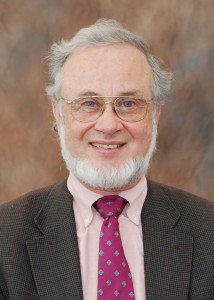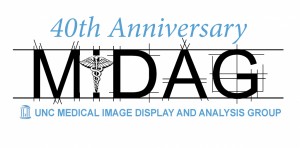
Stephen Pizer (photo by Dan Sears)
Click on links at the bottom of this story for more articles on computer science.
You’ve probably seen 3-D ultrasound images of a baby in a mother’s womb — maybe your own child, or those of a relative or friend.
The images, constructed on a computer screen via data from sound waves and illuminating an infant’s secret world, were made possible by research begun at UNC.
That work is just one example of the innovations and advances in medical imaging that have originated from the Medical Image Display and Analysis Group, known as MIDAG.
As UNC’s department of computer science celebrates its 50th anniversary this year, MIDAG will hold its own birthday party, recognizing 40 years of pioneering work that has crossed academic disciplines and reached across campus and around the world.
The interdisciplinary research initiative has brought together faculty and students from computer science, the School of Medicine, biomedical engineering, statistics, mathematics, radiology, radiation oncology and other disciplines.
 Stephen Pizer, Kenan Professor, is the computer scientist who founded the group.
Stephen Pizer, Kenan Professor, is the computer scientist who founded the group.
“My dissertation from Harvard University was the first dissertation in the world on medical imaging,” he said. He came to Carolina in 1967, joining Fred Brooks’ three-year-old department of “information science.”
Pizer continued his work in medical imaging, collaborating with UNC biomedical engineering professors and colleagues in Boston and at Duke University.
In 1974, professors Gene Johnston and Ed Staab joined the UNC School of Medicine’s radiology department and started working with Pizer. MIDAG was born.
Since then, hundreds of graduate students and researchers in computer science, medicine and other fields have been a part of the group. MIDAG also helped train generations of medical researchers and computer scientists to use medical imaging to improve the diagnosis and treatment of illness, and that led to the formation of other labs and research centers at UNC, as well as at other universities. The Biomedical Research Imaging Center in the School of Medicine, for instance, came out of a campus-wide committee on medical imaging chaired by Pizer.
MIDAG’s research helps doctors treat and diagnose disease and extend the frontiers of medical knowledge.
Based on work done by Pizer and collaborators, such as UNC oncologist Julian Rosenman, the world’s first 3-D radiation oncology treatment planning system, PLUNC, was developed at Carolina.
Those systems enable physicians to more precisely target tumors for radiation therapy — boosting the amount of radiation that the tumor receives and reducing the exposure of neighboring, healthy tissues.
Medical imaging is a key component of modern medicine today, driven in part by computer scientists who specialized in medical imaging.
“Our alumni are out there, many of them, making major contributions,” Pizer said. “We’ve played a significant role in moving those innovations forward not only at UNC, but around the world.”
[ By Mark Tosczak ]
More stories about computer science:
Comp-Sci Turns 50: Breaking barriers from graphics to robotics
Brooks’ influence spans IBM mainframes to next-gen virtual reality
Want to work in movies? Learn to code
